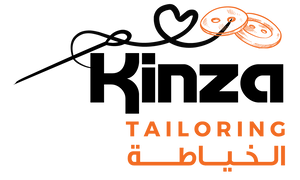What is Fabrics? Understanding the World of Textiles
Fabrics are the backbone of the fashion industry, home décor, and countless other everyday products. From the clothes we wear to the furniture we relax on, fabrics surround us, offering comfort, style, and functionality. But what exactly are fabrics, and why are they so important? In this article, we’ll explore the different types of fabrics, their uses, and how they shape our world.
What is Fabric?
At its core, fabric is a flexible material made by weaving, knitting, crocheting, bonding, or felting fibers together. These fibers can be natural, synthetic, or a blend of both, each offering unique characteristics. Fabrics are a critical part of the textile industry and play a vital role in fashion, interior design, automotive manufacturing, and many other industries.
Types of Fabrics
Fabrics can be broadly classified into three main categories based on the type of fiber used:
1. Natural Fabrics
Natural fabrics are made from fibers that come from plants, animals, or minerals. They are known for their comfort, breathability, and sustainability. Some popular natural fabrics include:
-
Cotton – Soft, breathable, and versatile. Ideal for clothing, bed sheets, and casual wear.
-
Wool – Warm, moisture-wicking, and insulating. Commonly used for sweaters, coats, and blankets.
-
Silk – Luxurious, smooth, and lightweight. Perfect for high-end fashion and luxury bedding.
-
Linen – Strong, absorbent, and cool. Ideal for summer wear, home textiles, and upholstery.
-
Cashmere – Soft, luxurious, and insulating. Often used in premium sweaters and scarves.
-
Hemp – Durable, breathable, and eco-friendly. Increasingly popular for sustainable fashion.
2. Synthetic Fabrics
Synthetic fabrics are man-made fibers produced through chemical processes. They are often more durable, resistant to wrinkles, and less expensive than natural options. Common synthetic fabrics include:
-
Polyester – Durable, quick-drying, and wrinkle-resistant. Widely used in sportswear and activewear.
-
Nylon – Strong, elastic, and abrasion-resistant. Commonly used in swimwear and outdoor gear.
-
Acrylic – Soft, lightweight, and warm. Often used as a wool alternative.
-
Spandex – Highly elastic and flexible. Essential for activewear, dancewear, and stretchy clothing.
-
Rayon – Soft, breathable, and versatile. Often used as a silk alternative.
-
Microfiber – Extremely fine and dense, ideal for cleaning cloths and athletic wear.
3. Blended Fabrics
Blended fabrics combine natural and synthetic fibers to enhance the qualities of both. These fabrics are designed to offer the best of both worlds – the comfort of natural fibers and the durability of synthetics. Examples include:
-
Poly-cotton (Polyester and Cotton) – Combines the breathability of cotton with the durability of polyester.
-
Wool-nylon blend – Adds strength and flexibility to warm wool garments.
-
Lycra-cotton blend – Provides comfort with added stretch.
-
Tencel-cotton blend – Known for its softness and eco-friendly properties.
Key Characteristics of Fabrics
Fabrics vary widely in their characteristics, which can influence their performance, comfort, and care. Some key characteristics include:
-
Breathability – Natural fabrics like cotton and linen are highly breathable, while synthetic ones like polyester may trap heat.
-
Durability – Fabrics like nylon and polyester are known for their strength, while delicate fabrics like silk require more care.
-
Stretchability – Spandex and Lycra offer exceptional stretch, making them perfect for activewear.
-
Absorbency – Linen and cotton are highly absorbent, while synthetic fabrics like polyester resist moisture.
-
Texture – From the smoothness of silk to the roughness of burlap, texture varies widely.
Uses of Fabrics
Fabrics have a wide range of applications, from clothing to industrial uses. Here are some of the most common uses:
-
Apparel – T-shirts, dresses, suits, athletic wear, and outerwear.
-
Home Textiles – Bedsheets, curtains, upholstery, and towels.
-
Industrial Fabrics – Car seats, airbags, tents, and industrial filters.
-
Medical Textiles – Bandages, surgical gowns, and protective gear.
-
Tech and Innovation – Smart fabrics for wearable technology, including temperature control and health monitoring.
Choosing the Right Fabric
Choosing the right fabric depends on the intended use, desired comfort, and maintenance requirements. For example, natural fabrics like cotton are ideal for summer clothing, while synthetic fabrics like polyester are great for activewear due to their moisture-wicking properties.
The Future of Fabrics
With growing awareness of sustainability, the textile industry is shifting towards eco-friendly alternatives. Fabrics made from recycled materials, organic cotton, and innovative options like bamboo, Tencel, and even lab-grown leather are gaining popularity. Innovations like 3D-knitted garments and biodegradable fibers are also shaping the future of fashion. This shift is particularly important for businesses like ladies tailor Abu Dhabi, where the demand for high-quality, sustainable fabrics is rising as consumers seek environmentally friendly and stylish clothing.
Conclusion
Understanding what fabrics are and their various types is essential for making informed choices in fashion, interior design, and even daily purchases. Whether you’re selecting a cozy sweater, a durable backpack, or luxurious bed sheets, knowing the basics of fabric types and their characteristics can help you choose the best option for your needs.


